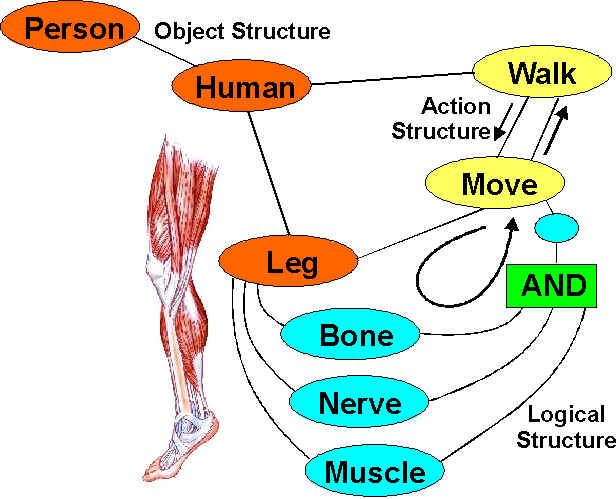
We build a structure that represents the class - Human - so that we can use it to read Crime Reports. It is extremely complex, going down to the guts level, with fingernails (to be scraped for evidence), a heart to bleed, nerves and sinews to be severed by a bullet.
When Detective Fred Nerk enters the room, we don't want to know massive amounts of internal detail about him, so we use Partial Instantiation. That is, we note down the details that are of current interest about Fred - he is male (handy for pronouns), name is Fred, badge number 1014. Only if we are pressed, do we start looking deeper into Fred's internal states. We have a complex representation, but most of the time we only use ciphers for people.
The world is too diverse for us to have a fully cooked model for every possible combination - "injured detective" - must be conjured out of two classes - "injured person" and "detective" - when the need arises. Problems arise in performing this dynamic classing - how do we resolve inconsistencies, and in which order we should overlay changes - "injured detective" indicates the injury occurred after becoming a detective, whereas "detective with a disability" is a more complex decision.
Sometimes we need to merge two or more classes
"it was a black van or SUV"
There is no point going back to the parent - "land vehicle" - and creating a new class, instead we merge the attributes until something else allows us better differentiation.
Humans don't learn about the world on the basis that there is a root inanimate object and an abstract object, and everything else can be built on one of those bases. They learn about the world by learning about themselves - a living self-mobile and self-aware thing, and then learning that other things do not share some of those properties. A dog cannot speak, a rock cannot move by itself. The ability to partially nullify some aspects of a class opens up a much larger range of available classes and decreases the amount we have to remember. A one-armed person is not another model built from the components that make up Human, it is a Human with one arm missing. By nullification, we mean turning the structure dark (the structure carries a message to say it isn't really there). We don't tear out the relevant structure if a person has no legs, we turn it off so it plays no part - no legs, can't walk. We didn't need IF NOT legs THEN NOT walk, sending the legs dark sent walk dark as well, because the action of walking comes from moving the legs.
As well as nullification, partial degradation needs to be modelled. "He was shot in the leg" means he still has a leg, it is just not as useful, so some actions may be degraded or lost. The classing structure needs to have sufficient complexity to represent the degraded state.

To handle damage, we build a structure which combines objects and relations (relations are treated in a similar way to objects, having parents, children, attributes, components) - and bind them together with logical and existential states.
The logical and existential states both initiate actions, and control whether they are feasible, based on the state of the objects.